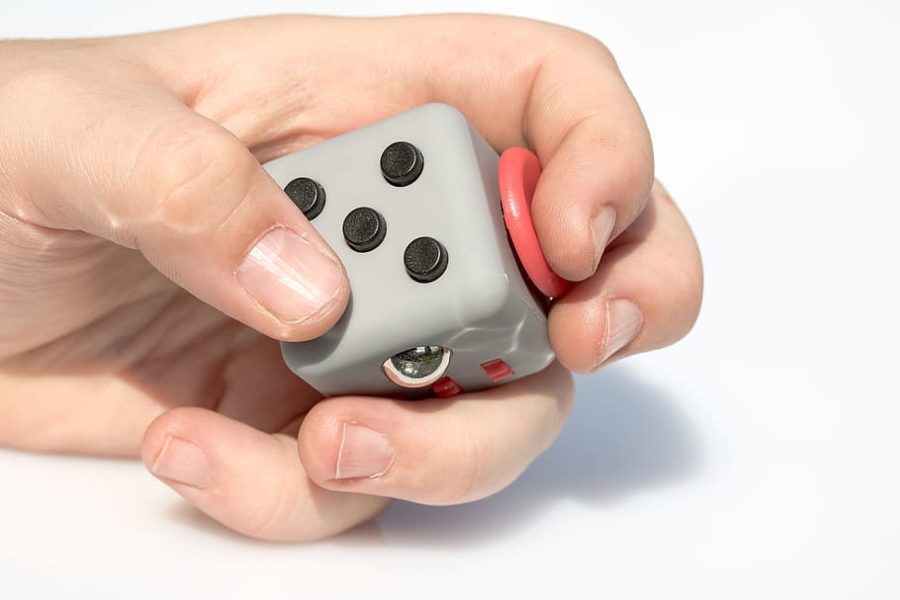What is ADHD?
Every year, millions of children and adults are diagnosed with ADHD—a common disorder that many know little about.
image courtesy of Wallpaperflare.com
Hyperactivity caused by ADHD can be treated by a variety of fidget toys.
March 31, 2021
Attention-deficit/hyperactivity disorder (ADHD) is one of the most misunderstood and misdiagnosed psychological conditions. It is also one of the most common, affecting over 6.1 million children and an estimated 4.4% of adults. It can be diagnosed in early childhood and is much more complex than many people believe.
ADHD causes a person to have difficulty focusing and can also cause squirming or anxious behaviors. An individual with ADHD is much more than just the cliches of “having too much energy” or “getting distracted easily.”
ADHD has a vast variety of symptoms as it has more than one single type. A person can be classified into one of three types based on the severity of the symptoms they experience.
The first type, Predominantly Inattentive Presentation, causes an individual to become easily distracted or have difficulty finishing tasks and remembering details. This specific type of ADHD has been found to be increasingly prevalent in high school students, as the difficulty to complete tasks leaves teenagers stressed and flooded with work. Treating this type of ADHD can be challenging but is made easier by eliminating an individual’s distractions by turning off radios, TVs, and cell phones.
A person who experiences the second type, Predominantly Hyperactive-Impulsive Presentation, will likely be seen fidgeting and talking. The individual might feel restless and be highly impulsive, interrupting others and making rash decisions. This type of ADHD in children might result in the child exhibiting hyperactive behaviors, running, jumping, or climbing at random times. Parents may dismiss this type of behavior in their children, when in reality, their child is experiencing a scientific neurological disorder.
The final type of ADHD is Combined Presentation, where an individual experiences the symptoms of both Predominantly Inattentive Presentation and Predominantly Hyperactive-Impulsive Presentation.
Contrary to common belief, ADHD cannot be caused by everyday activities like watching too much television, or environmental factors like parenting and poverty. While the causes of ADHD are unknown, scientists are studying possible causes and risk factors for the disorder. Some of the most common risk factors include brain injuries, premature delivery, and exposure to lead during pregnancy or at a very young age.
For years, scientists and doctors had known nothing about how the ADHD brain worked. This made it difficult to diagnose people and give the correct type of medication. Children were originally taught to slow down their movements when they were experiencing hyperactivity or restlessness. However, due to extensive research, scientists have discovered just how the disorder causes the brain to function.
Structural imaging such as CTI and MRI scans has helped scientists understand how dramatically different the ADHD brain really is. Studies have shown that individuals with ADHD have a smaller prefrontal cortex and basal ganglia. These scans also reveal a decreased volume in the brain’s posterior inferior vermis of the cerebellum.
All of these areas in the brain play a vital role in a person’s focus and attention span, which reveals why people with ADHD experience certain symptoms. Studies like these have proven how ADHD isn’t just a combination of random symptoms but a neurological disorder with real, scientific evidence to back it up.
One of the many myths associated with ADHD is that children will outgrow the disorder. Scientists have discovered that over 85% of children diagnosed with ADHD will continue to show symptoms throughout their adulthood. These symptoms may not be the same, and the severity is prone to change.
Contrary to popular belief, ADHD cannot be cured. Because the disorder is a chronic condition, it does diminish or disappear away with age. However, it can be successfully treated with a combination of medication and therapy. Therapy for ADHD is most common in younger children around four to five years of age. By treating ADHD this early, the severity is minimized and helps the child learn behaviors on a daily basis.
As ADHD progresses throughout a person’s life, it is likely to change as they reach adulthood. Symptoms of the disorder may interrupt and cause difficulty in job performance or create problems in the household. Adults who are ashamed of the label “ADHD” or are uneasy about being treated for the disorder may avoid diagnosis and treatment, only adding to the stress and anxiety which exasperates the symptoms.
The Centers for Disease Control and Prevention (CDC) stated, “Symptoms may look different at older age, for example, hyperactivity may appear as extreme restlessness. Symptoms can become more severe when the demands of adulthood increase.”
Simone Biles, Michael Phelps, Justin Timberlake, Adam Levine, Howie Mandel, and political analyst James Carville are all great successes in their chosen fields. All of these people also have ADHD. They are proof that, while the disorder can cause a variety of symptoms, it doesn’t stop people from achieving their goals in life.
While there is still much to learn about ADHD—its causes, symptoms, and possible treatments—scientists and doctors around the world have made massive advancements in the past decade in order to truly better understand and treat this disorder. Caught early and treated appropriately, ADHD can be managed and controlled effectively.














